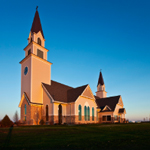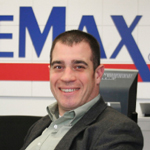StonebridgeCarras at a Glance
Location
Bethesda, MD
Founded
2005
Employees
Approx. 40
Specialties
Real estate investment and development
How are you different from other real estate investment and development firms?
Doug Firstenberg: One of the areas that distinguishes us from other developers is we specialize in mixed-use developments that are also transit-oriented. A typical project of ours will include at least two uses, often more. We prefer to have retail in our developments, and then we’ll include office, residential, or hotel space as appropriate.
Have you focused on this particular sector for long?
DF: We were one of the developers that really focused on transit-oriented development before it became a buzzword. Today, most urban mixed-use developers seek to realize the benefits of public transportation.
What specifics have to be considered when putting up properties near public transit?
DF: There are a multitude of issues that have to be addressed, including potential impacts on the tunnel during construction, the cost premiums of being located adjacent to the Metro, and potential setback issues. Developing near public transportation is more complicated, but you get the benefit of creating unique assets due to their proximity to mass transportation.
Do you have to work more with local, state, or federal governments to get approvals for such projects?
DF: Our jurisdictions are heavily regulated in terms of land-use matters, but I don’t think being a transit-oriented developer means we have more oversight. But, when you are developing large mixed-use projects, you tend to get more scrutiny because of the project’s size, scale, and complexity.
What are some of your most recent projects?
DF: We’ve done extensive developments in Bethesda, Maryland. The arrival of the Metro 28 years ago has, over time, totally transformed Bethesda from a bedroom community into a dynamic, mixed-use market with office, retail, residential, and hotels.
Our largest project is Constitution Square, a 2.5 million-square-foot development located in the NoMa area of Washington, DC, just north of Union Station. It is literally adjacent to the NoMa Metro station, which was Metro’s first infill rail station not in [its] original master plan.

How did you become involved in the Constitution Square development?
DF: We identified NoMa as an emerging market, as the District has been moving east for years. We saw the opening of the NoMa Metro station and the new headquarters for the Bureau of Alcohol, Tobacco, and Firearms as catalysts for redevelopment of this old industrial area.
We looked at several different sites but kept coming back to this site adjacent to the Metro. We were not the successful bidder the first two times, but we were persistent, and ultimately were able to acquire it.
What were some of the considerations for this development?
DF: The key was doing a mixed-use development because, with 2.5 million square feet of development, it clearly needed to have a variety of uses in order to be successful—to attract people to it and absorb the space.
We have built two office buildings that are 100 percent leased to the federal government; a third is under construction. The 440 apartments are leased, and we are currently finishing 203 more. Constitution Square has 80,000 square feet of retail, including a 50,000-square-foot grocery store, as well as a hotel.
What are the challenges that come with working primarily in high-end markets?
DF: What we develop is a niche. The projects are big and complicated; we aren’t going to find a multitude of sites waiting to be developed, even in a market the size of Washington, DC. The nature of development is you have to constantly be looking for new projects to keep the pipeline full. We must stay disciplined, so we are only doing projects that can be both quality developments and financially successful; finding this combination is a challenge.
What do you consider when evaluating future development possibilities?
DF: Our goal is to continue to do new urban mixed-use projects that enhance neighborhoods, whether it is a great neighborhood getting better or a completely transforming neighborhood. When we finish, we always want to think the area is better off than when we started the project. ABQ


